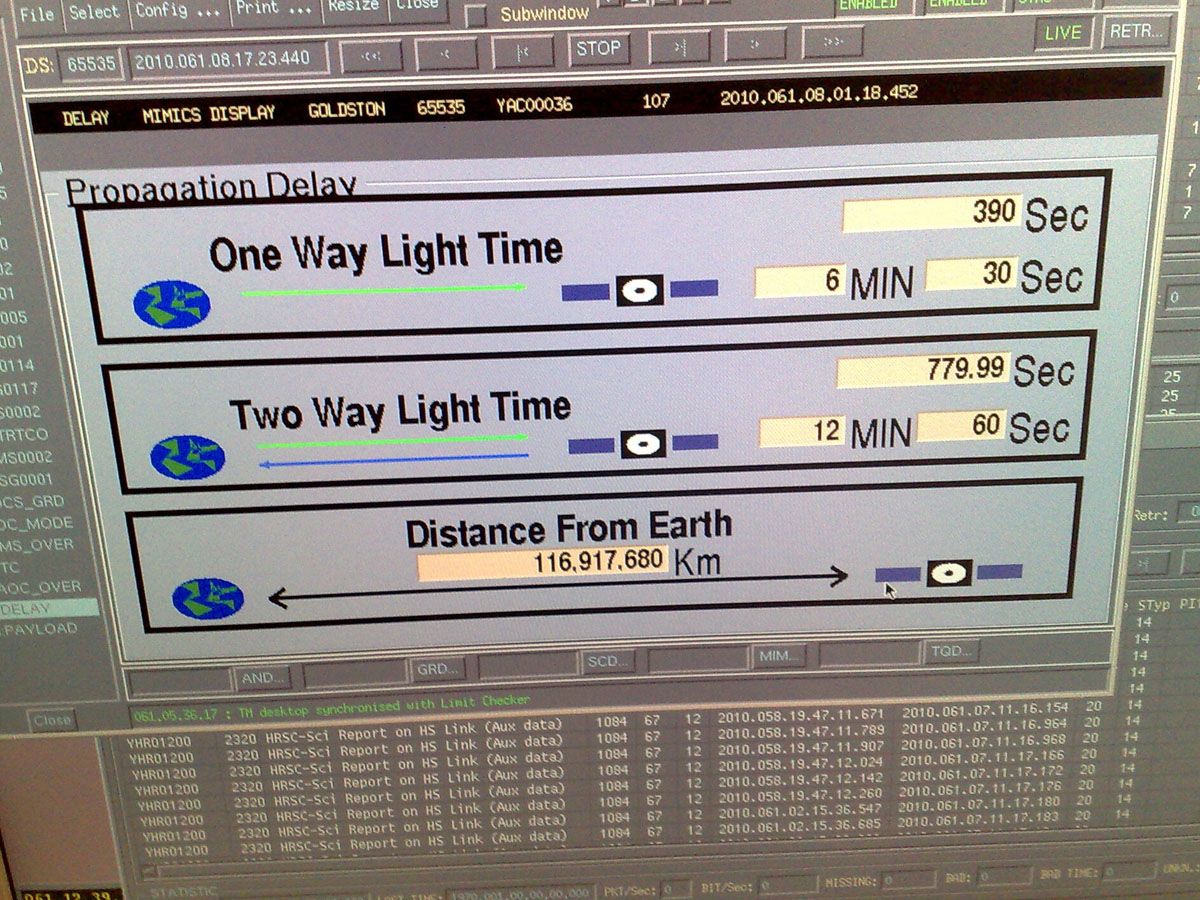Despite having shown us unprecedented vistas, the Martian pictures usually arrived after a significant delay, sometimes taking days to reach our screens. Now, ESA has a groundbreaking plan to rewrite this story by doing something never done before - streaming live images directly from Mars!
Imagine, pictures from an entirely different planet displayed on your screen with a mere delay of minutes, not hours or days. This unique event promises to transport us, in real time, to the distant Martian orbit.
But how exactly will we pull off this live stream from a planet over 54.6 million kilometers away?
The Mars Express Mission and the Martian Landscape
Since its launch two decades ago, the Mars Express has been on an epic journey, tirelessly orbiting Mars and gifting us with a wealth of knowledge about this distant red sphere.
Sailing above the Martian surface, it has been mapping the Martian landscape, scanning its atmospheric composition, and even probing beneath its rusty exterior.
The data gathered has furnished scientists with crucial insights into Mars's geology and climate, significantly propelling our understanding of the Martian world.

When we talk about the Mars Express, we cannot overlook the essential role of the Mars Webcam, formally known as the Visual Monitoring Camera (VMC). Initially, the VMC's primary task was to track the Beagle 2 lander's separation from the Mars Express spacecraft.
It vigilantly watched over the Beagle 2 as it journeyed towards the Martian surface, capturing each moment of its descent. The data from this phase provided a wealth of information, aiding in understanding the spacecraft's performance and fine-tuning future Mars landing missions.
From Delayed Transmission to Real-Time Imaging
For the longest time, we've accepted that views of Mars come with a delay. The process seemed relatively simple - Mars Express captured stunning images of Mars, stored them onboard, and then transmitted this treasure trove of data back to Earth.
However, the communication process is more complex than it seems. Often, observations and data from the spacecraft are collected when it's not in direct contact with a ground station antenna on Earth.

This situation may arise due to geometric reasons or when the spacecraft's antenna is pointed away from Earth to gather scientific data. The data, meticulously collected under these circumstances, is stored on the spacecraft and transmitted back to Earth when it establishes contact with the ground again.
This inherent delay has been a necessary part of space exploration—until now!
Today, ESA is set to revolutionize this process by introducing real-time imaging. Instead of waiting hours or days to see Mars, we will soon view images that reflect the red planet's state just minutes prior.
Making History: Live Streaming Images from Mars
This event marks the first time that we'll receive live visual transmissions from another planet. The Visual Monitoring Camera (VMC) of the Mars Express, which has been in service for the past 20 years, will play a crucial role in this historic undertaking.
The VMC, initially a tool for monitoring a spacecraft's activities, will now transform into our real-time window to Mars, bringing us one step closer to experiencing the distant Martian world.
While the event will last only an hour, it aims to deliver an image approximately every 50 seconds. That's over a dozen fresh snapshots of Mars, displayed in near-real time, promising a truly immersive Martian experience.
In preparation for the live stream, ESA has allocated a specific time for the event. The live stream is slated to commence on June 2, at 12:00 p.m. ET. Those interested in catching this remarkable view of Mars can tune in to ESA's YouTube Channel.
However, this groundbreaking initiative is not without its potential hitches. The signal, traveling across millions of kilometers of the cosmic void, takes about 18 minutes to reach us, with an additional minute for data transmission through wires and servers.
Given the vast distances involved and the complexities of interplanetary communication, there may be some timing uncertainties. But these challenges aren't dampening the spirit of the dedicated team behind the event.
James Godfrey, the spacecraft operations manager at ESA's mission control center, expressed high optimism despite these potential hurdles. His enthusiasm encapsulates the general sentiment towards this historical event, one of anticipation and excitement.
Role and Achievements of Mars Express' Visual Monitoring Camera
The Visual Monitoring Camera (VMC) on board the Mars Express has been an indispensable tool in our Martian explorations. Initially designed to monitor the separation of the Beagle 2 lander from the spacecraft. It was later repurposed for science and outreach activities.

The VMC provides wide coverage of the Martian landscape, albeit in lower resolution, complementing the high-resolution color images provided by the High-Resolution Stereo Camera (HRSC).
This camera has made some striking scientific discoveries possible, including studying cloud formations above Mars' volcanoes, thereby contributing to our evolving understanding of Mars.
Sources: esa.int












